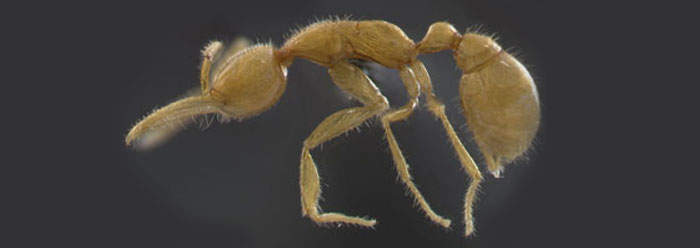University of Texas researchers have concluded that a newly-discovered, blind, subterranean ant “evolved over 120 million years ago from wasp ancestors.”1 The discovery of previously unknown insects and other animals is interesting, but would scientists assign this kind of timeframe if they didn’t have to fit their discovery into mandatory long ages?
The age given to these ants did not come from any experiment but was “inferred from several nuclear genes” taken from one ant’s leg, according to the researchers’ study slated to appear in Proceedings of the National Academy of Sciences.2 This evidence supposedly “confirmed its phylogenetic position at the very base of the ant evolutionary tree,”1 but this conclusion depends on a suite of undemonstrated assumptions, including these:
- Millions of years of evolution must be presumed at the outset, ignoring alternate timescales.
- In this case, DNA sequences from differing species were compared. The degree of similarity of DNA between species is presumed to represent evolutionary ancestry, not intentional design.
- Whereas even from a creation science perspective, some DNA sequence differences do account for variation within a species or kind, evolutionary analyses presume that all differences came from mutations.
- A rate for collecting and “fixing” the “beneficial” mutations into the ant population is presumed, although this process has not been documented. This rate is roughly correlated to fossils, which come with pre-set ages given by the presumption of millions of years of evolution (see point 1 above).
This constitutes a circular "argument from authority," where the data has been squeezed into an evolutionary paradigm and then turned around and used to support evolution.
Another important aspect of this research is the scientists’ selection of which of the “several nuclear genes” to analyze. It is typical for an evolutionary tree-of-descent based on one or two genes to completely disagree with a similar tree that is based on different genes or other data. The Proceedings paper documenting this research indicates that these conjectural, evolution-presuming ant family trees have had a rough past: “Previously published studies, however, led to contradicting views of early ant evolution.”2
These ever-changing models that continue to force molecular and morphological data into evolutionary trees end up contradicting each other, and there are roughly as many family trees as there are relevant researchers. The University of Texas scientists, however, remain confident that the most recent “evolutionary scenarios are congruent with the…hypothesis for ant evolution, proposing a ground-associated ant ancestor, derived from a wasp-like, aculeate predator that radiated into specialized soil.”2
Despite their confidence in reporting this find, their study admits, “The exact nature of the ancestral ant remains uncertain.”2 The ants they examined live their entire lives underground, and therefore do not need eyes. These insects do just fine in their niche, and the interpretation that the ants represent some ancestral form that is millions of years old seems to be based entirely on presumptions.
The conclusion that these creatures were made to reproduce after their own kinds—only thousands, not millions, of years ago—is a better alternative explanation, because if each ant kind was specifically created,3 then the problem of unraveling their convoluted evolutionary family trees vanishes. The most straightforward explanation is that these newly-discovered ants were made by God’s design.
References
- New Ant Species Discovered in the Amazon Likely Represents Oldest Living Lineage of Ants. University of Texas at Austin press release, September 16, 2008.
- Rabeling, C., J. M. Brown, and M. Verhaagh. 2008. Newly discovered sister lineage sheds light on early ant evolution. Proceedings of the National Academy of Sciences. Published online before print September 15, 2008, accessed September 17, 2008.
- Genesis 1:24-25.
Image Credit: C. Rabeling and M. Verhaagh
* Mr. Thomas is Science Writer.
Article posted on September 24, 2008.
























